-
 +24 +3
+24 +3Mystery Mars haze baffles scientists
The vast plume was initially spotted by amateur astronomers in 2012, and appeared twice before vanishing.
-
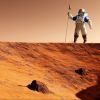 +13 +3
+13 +3Mars One: 'We're all going to die, but it's important what you do before you die'
Mars One, a group that plans to send humans on a one-way trip to Mars, has announced its final 100 candidates. They have been selected from 200,000 applicants and will go on to further testing later this year, which they expect to include team-building exercises and later, isolation. Eventually, 24 will be selected to make up six crews of four, which Mars One says they hope to launch to the Red Planet every two years from 2024, with the aim of starting a colony there.
-
 +19 +4
+19 +4Mars One narrows applicant pool to 100 potential dead Martians
On Tuesday, the Mars One foundation took one small step closer to its mission of sending humans to Mars by announcing the "Mars 100," a group of 100 men and women who've moved on from the initial applicant pool of thousands. The private nonprofit reached that number, divided evenly between men and women, after narrowing down from last year's list of 705 hopefuls—all of whom paid an entry fee of roughly $38 to sign up for what's been clearly advertised as a one-way trip to their deaths.
-
 +25 +4
+25 +4Mars Missions Are A Scam
Last week, the nonprofit reality-television project Mars One announced its selection of 100 volunteers who may get one-way tickets to Mars. It’s only the latest in decades of celebrated Mars colonization projects. And just like all the rest, this one is unlikely to ever happen, experts say. “It looks like a scam,” John Logsdon, a space policy expert at George Washington University in Washington, D.C., told BuzzFeed News.
-
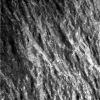 +16 +3
+16 +3Mars Exploration Rovers Update: Opportunity Discovers New Rock Type, Updates Flight Software
Opportunity stayed the course along the western rim of Endeavour Crater toward Marathon Valley in February.
-
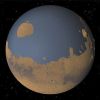 +41 +4
+41 +4Mars Had an Ocean, Scientists Say, Pointing to a Treasure Trove of New Data
If confirmed, the findings would lend new weight to the view that ancient Mars had everything needed for life to emerge.
-
 -2 +1
-2 +1Nasa finds evidence of a vast ancient ocean on Mars
A massive ancient ocean once covered nearly half of the northern hemisphere of Mars making the planet a more promising place for alien life to have gained a foothold, Nasa scientists say. The huge body of water spread over a fifth of the planet’s surface, as great a portion as the Atlantic covers the Earth, and was a mile deep in places. In total, the ocean held 20 million cubic kilometres of water, or more than is found in the Arctic Ocean, the researchers found.
-
 +11 +2
+11 +2NASA Finds Likely Source of Mars Rover Curiosity's Short Circuit
The Feb. 27 short circuit that has halted some of the science work by NASA's Mars rover Curiosity, apparently originated in the robot's rock-boring drill, space agency officials announced Friday (March 6).
-
 +20 +6
+20 +6Mars One Finalist Explains Exactly How It’s Ripping Off Supporters
No money, no process, no explanation: An insider speaks out for the first time on the hopelessly flawed scheme to fly to…
-
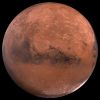 +11 +1
+11 +1Mars One finalist speaks out, says Dutch non-profit likely scamming its rubes
100 final candidates barely screened, given points for buying merch.
-
 +5 +1
+5 +1'Mars One' finalist breaks silence, claims organization is a total scam
Mars One, the non-profit organization that has been recruiting hopefuls wishing to be among the first humans to ever step foot on the red planet, is pretty much a giant scam according to one finalist.
-
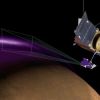 +13 +1
+13 +1'Northern Lights' Observed on Mars
A Nasa spacecraft orbiting the Red Planet has detected a mysterious aurora that reaches deep into the Martian atmosphere.
-
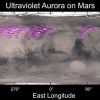 +17 +3
+17 +3MAVEN Spots Dust Cloud, Aurora on Mars - Sky & Telescope
NASA's spacecraft has detected an auroral glow across Mars's northern hemisphere, plus dust high above that has left planetary scientists perplexed.
-
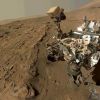 +11 +1
+11 +1Possible fatty acid detected on Mars
A fatty acid might be among organic molecules discovered on Mars by Nasa's Curiosity rover. However, it's not possible at this stage to determine whether the compound has a biological or non-biological origin. And contamination could still be responsible for the finding.
-
 +13 +1
+13 +1Russia & US agree to build new space station after ISS, work on joint Mars project
In a landmark decision, Russian space agency Roscosmos and its US counterpart NASA have agreed to build a new space station after the current International Space Station (ISS) expires. The operation of the ISS was prolonged until 2024.
-
 +20 +2
+20 +2Russia & US agree to build new space station after ISS, work on joint Mars project
In a landmark decision, Russian space agency Roscosmos and its US counterpart NASA have agreed to build a new space station after the current International Space Station (ISS) expires. The operation of the ISS was prolonged until 2024. “We have agreed that Roscosmos and NASA will be working together on the program of a future space station," Roscosmos chief Igor Komarov said during a news conference on Saturday.
-
 +3 +1
+3 +1What NASA Learned from Orion Space Capsule's 1st Test Flight
A Q&A about the first flight test of NASA's Orion capsule with two of the people responsible for the deep-space vehicle's development.
-
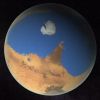 +14 +4
+14 +4Ancient Mars May Have Had Slow-Moving Monster Waves
Ancient Mars may have featured oceans with huge, slow-moving waves. Studying the shorelines these waves may have carved could shed light on the ancient Martian climate, such as whether or not it had seas long enough for life to potentially develop.
-
 +1 +1
+1 +1Curiosity Sniffs Out History of Martian Atmosphere
NASA's Curiosity rover is using a new experiment to better understand the history of the Martian atmosphere by analyzing xenon.
-
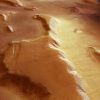 +14 +2
+14 +2Mars has belts of glaciers consisting of frozen water
Mars has distinct polar ice caps, but Mars also has belts of glaciers at its central latitudes in both the southern and northern hemispheres. A thick layer of dust covers the glaciers, so they appear as surface of the ground, but radar measurements show that underneath the dust there are glaciers composed ...
Submit a link
Start a discussion




















